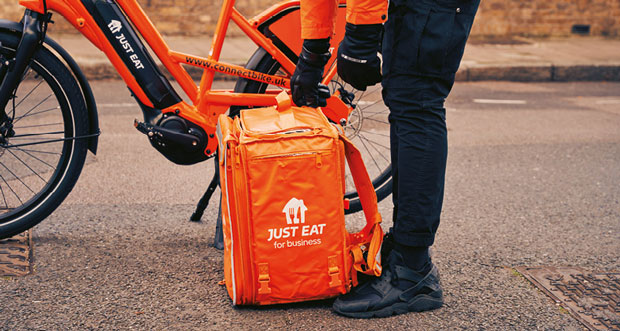Matt Ephgrave, Managing Director at Just Eat for Business and Dr Audrey Tang, independent workplace psychologist believe digital food delivery platforms suit new modes of working while enhancing traditional catering
Our recent research on UK office workers revealed that shockingly, half of employees were dissatisfied with their work lunches. Whether it’s a supermarket meal deal, something brought from home, or a hot lunch served on-site, one in every two employees think it could be better.
Rather than seeing this as a problem, business leaders should consider this an opportunity. According to a study, 50 per cent of UK workers said that better food options at work would significantly improve their experience. Evidently, employees now place more value than ever on their work mealtimes, treat them as a social opportunity and one where they can explore new cuisines and dishes. Therefore, in order to retain existing staff and attract new talent, the onus is on business leaders to make food at work a priority.
FOOD AS A MEANS OF DEVELOPING CULTURE
In more recent times, business leaders have focused almost entirely on the importance of company ‘culture’. They want to foster certain atmospheres that they believe will resonate with their employees, while also improving their overall productivity.
Food, research has shown, is one of the most important elements of a company’s culture. How it’s eaten, where it’s eaten, what is eaten – these are all factors that can shape employees’ experiences of their day-to-day work. According to research, two in every three people perceive shared meals with colleagues as a significant contributor to positive working cultures.
It has also been shown that food can help recruitment. Sixty-eight per cent of office workers labelled food as the employment perk that they valued above all others in a recent survey. Business leaders who fail to give food its due recognition will be missing out on a major competitive advantage when recruiting talented new employees.
DIGITAL FOOD DELIVERY PLATFORMS
This is where leaders would usually turn to traditional catering – a great way to feed an office en masse and provide nourishing food for the workforce. However, since the hybrid model emerged, traditional catering as we once knew has proven a little more tricky to implement.
Not all workers now want to eat the same thing, and some have dietary requirements that must be acknowledged. In addition, high energy prices and inflation mean that permanent on-site cafés and eateries may no longer make sense for every facility. When most companies now work from home at least some of the time, it’s even more difficult to see how the traditional model can survive the next decade without a shake up.
To adapt, businesses must look to flexible options that make both financial sense and cater to a workforce that demands better quality and diversity. This transition has, in fact, already taken place over in the consumer world of food, which has advanced at a rapid rate.
ADDING VALUE
These same platforms exist for businesses too, and they add value to the corporate world. They help the catering process to be much smoother. Employees can use apps to find, choose, order, track, and receive food from suppliers all in the same place, instead of having to deal with the fuss of doing so over the phone or by email, usually from the last supplier who delivered passable food to them. Card details and receipts are kept in-platform, reducing the friction when ordering and dealing with business expenses.
Digital food delivery platforms also cater to employees’ demand for greater variety. Businesses are not tied to one single supplier, which will be restricted by scale and location. Instead, they can order from any supplier that delivers within their area. The food is produced by specialists, and any dietary requirements can be catered to, based on clear information displayed in the app.
To fully utilise the benefit that food offers to a company’s culture, business leaders must recognise the need to enhance the traditional model of catering with digital if they’re to keep employees happy and attract the best new talent. Digital food delivery platforms offer a brilliant option to integrate into a facility’s catering service. With greater variety and smooth processing, they make both culinary and business sense too.





